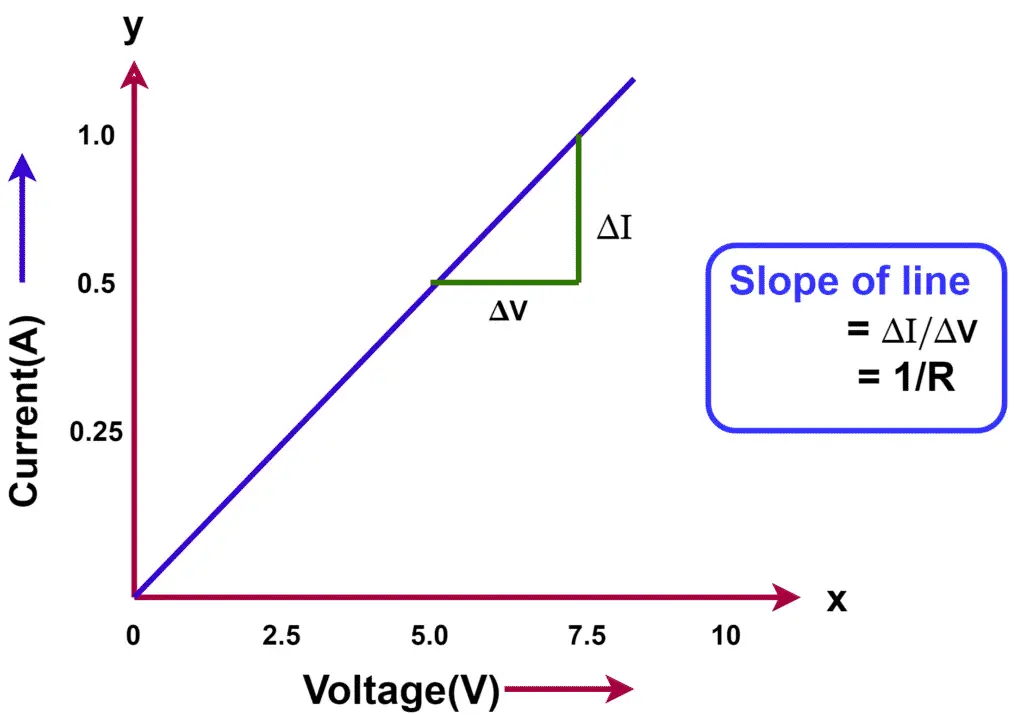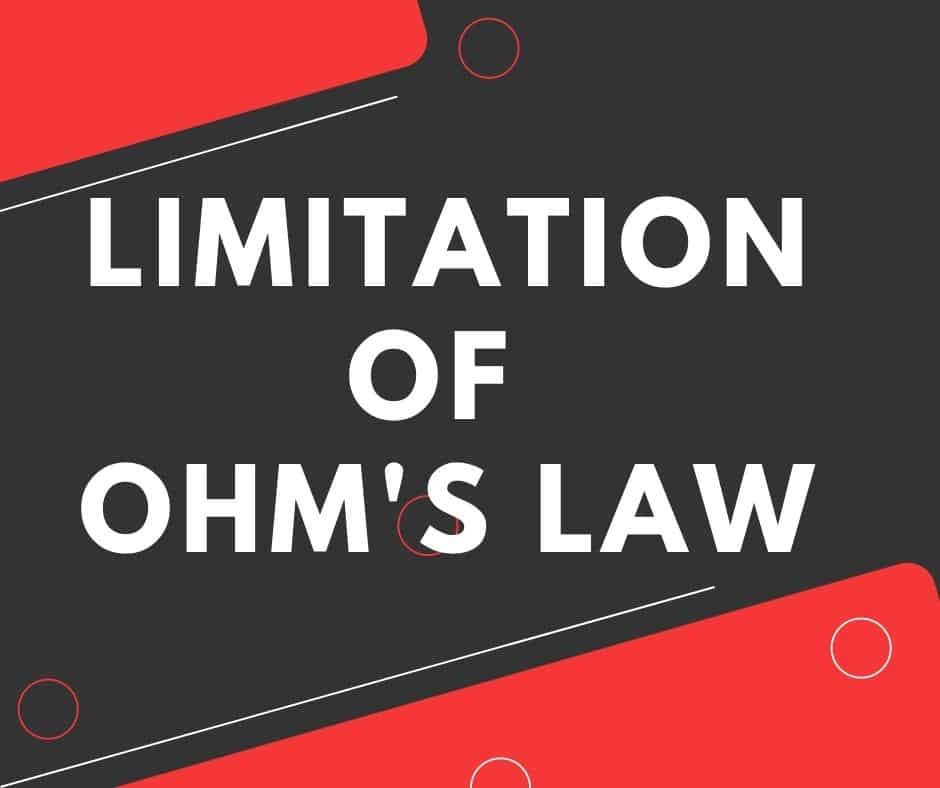The limitation of ohm’s law is that this law is not applicable to unilateral networks & nonlinear devices. The unilateral network permits the flow of current in one direction. Therefore, Ohm’s law is not applicable for all electrical networks and devices. In this post, we will discuss what are its limitations & what are the reasons behind this.
Ohm’s law states that the electric current is proportional to the voltage and inversely proportional to the resistance.
Ohm’s Law
V = I/R
Where V, I, and R are voltage, current, and resistance respectively.

From the above graph, it is clear that Ohms’s law is applicable only when the resistance of the device remains constant.
Followings are the limitations of Ohm’s Law:
- Ohm’s law is not applicable for unilateral electrical elements.
- Ohm’s law is not applicable for non linear devices.

Example Cases of Ohm’s Law Limitations
In the following cases, ohm’s law is not applicable.
Case-1
The diode is a non-ohmic or non-linear power device. This indicates that the current flows through the diode does not increase in the linear proportion of the increased voltage. The voltage across the depletion layer becomes constant on increasing the applied voltage. As a result, no further increase of the voltage across the PN junction is possible. However, the current through the diode increases with an increase in voltage.
Thus, it is clear that the diode current does not increase linearly on an increase of applied voltage. Therefore, in this case, Ohm’s law is not applicable.
Case-2
In the case of an incandescent lamp, the current through the lamp does not increase with an increase in voltage. Why does this happen? The filament resistance increases with the rise in temperature, and thus the filament lamp has non-linear characteristics. Here, Ohm’s law is not applicable.
Case-3
Almost all the semiconductor devices like a diode, Zener diode, transistor, IGBT, SCR, Triac, MOSFET exhibit non-linear VI characteristics, and Ohm’s law is not applicable for these devices. Therefore, we can not apply Ohm’s law to semiconductor devices.
Case-4
Ohm’s law is not applicable for unilateral networks. The unilateral electrical network does not allow the flow of electric current in both directions. Examples of unilateral devices is diode and transistor.
Case-5
Ohm’s law is not applicable for non-metallic conductors. All the insulating materials fall in the non-metallic conductor family. The current flowing through the insulating material is not proportional to the applied voltage. Therefore, the VI equation is non-linear for the insulating materials.
The VI equation of insulating material is V=KIm where k and m are constant and m<1,
Case-6
Ohm’s law is not applicable in the case of arc discharge lamps. The resistance of the arc increase with the voltage, the current, the temperature, the pressure of the ionized gas, and the state of the electrodes. As a result, the resistance of the arc lamp does not remain constant. And, therefore, the arc lamp does not follow ohm’s law.
Case-7
Ohm’s law is not applicable in the case of electrolytes in which gases liberate on the electrodes. The reason behind this is the change in the resistance of the electrodes.
In a nutshell, ohm’s law is not applicable for those devices whose resistance does not remain constant.
Read Next: